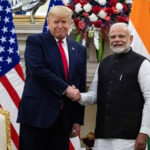By Ancy James
Cake Artist and Columnist
Olga Noskova, Russian Pastry Chef extraordinaire broke Instagram on May 2016 by gaining 300k followers overnight, a jump from her previous 34,000 followers, after sharing a few pictures of her eclectic cake which would go on to become her trademark “mirror glaze” technique. The internet drooled over every glamorous and blindingly shining masterpiece that she shared. Even as thousands of cake enthusiasts shared her cake designs praising it with words like “flawless”,”trippy and groovy”, “mesmerizing” and it was Britney Spears tweet: “This cake is too perfect to eat” that made the Russian Pastry Chef realize her own multimedia celebrity status.
A year into her phenomenal rise as the most sought after Cake designer and being in the spotlight has in no way dampened her ongoing passion to deliver the most perfect, glamorous and awe inspiring confection and her thriving Instagram account is proof of that
Currently she is gearing up for a Mega event where she will get to rub shoulders with the likes of Oprah Winfrey, Samuel L Jackson, Lady Gaga, Britney Spears and many others at “The 9th Shorty Awards” to be held in October this year in New York City. She has bagged a prestigious nomination as a finalist in the “Food” category. The Shorty Awards annually honor the best of social media by recognizing the influencer, brand and organization on Facebook, YouTube and Instagram, snapchat and others.
Ancy James got in touch with her to share with our viewers her inspirations and share some light on the creative process of making her gorgeous cakes. We asked her about her journey to the top and how much life has changed since 2016, between then and now and her plans for the coming years.
Ancy James:
 You have to give yourself credit for making history in instagram by adding 300k followers in less than 24 hrs last year with your glamorous mirror cakes and being the inspiration for cake afficianados around the world. Even the DIY(Do it yourself) kitchen table entrepreneurs are trying their hand at replicating your mirror glaze technique. In less than a year you have been recognized as a social media influencer with your prestigious nomination in the food category this year at ‘the shorty awards thanks to your every increasing followers. How do you feel about your phenomenal path to the top?
You have to give yourself credit for making history in instagram by adding 300k followers in less than 24 hrs last year with your glamorous mirror cakes and being the inspiration for cake afficianados around the world. Even the DIY(Do it yourself) kitchen table entrepreneurs are trying their hand at replicating your mirror glaze technique. In less than a year you have been recognized as a social media influencer with your prestigious nomination in the food category this year at ‘the shorty awards thanks to your every increasing followers. How do you feel about your phenomenal path to the top?
Olga Noskova:
In cooking, as in the fashion industry has its own legislature, trendsetters. Most often, they are world-famous masters of their craft, working with well-known restaurants or influential persons. Perhaps ordinary people have never heard of them, but they are well known in their circles. However, sometimes previously unknown confectioner can surprise the world with any of his incredible technique and conquer it, becoming the progenitor of a new trend. This is what happened to me. Many manufactures made mousse cakes, but my style of mirror glaze helped me stand apart from the general mass, and now, many associate mousse cake with my name. It’s a big responsibility because, now the world, professionals and amateurs alike are watching me and my work, and I always must be at a decent level in representing this trend in the confectionery art.
Ancy James
Pl share a little bit of the journey to becoming a multimedia celebrity. How has life changed after becoming the most popular and followed cake artist on the net? 
Olga Noskova:
All started with a dream. I was an economist but I wanted to find something that would bring me pleasure daily. Do you know the English say: “Water dripping day by day wears the hardest rock away”? So, every day I tried to create something so beautiful and lovely. And thanks to my unbelievable mirror and delicious cakes my popularity started to grow. The stars smiled at me. In my case, the first star who rated my talent is Britney Spears 🙂
The British “Independent” wrote my cake is “absolutely impeccably”. The BuzzFeed called my work is “absolutely flawless” and wrote that they are “too good to be eaten”.
One day I woke up famous in the world. My Instagram increased to 613K followers. I could not believe what had happened to me! Their comments, admiration, love – that’s what makes me understand that this is not a hobby and not a job. This is my life!
Ancy James
 You have seen phenomenal success in an industry where it is very important to offer something unique and different. How have you kept yourself grounded and what is your strategy to keep the internet drooling over you flawless and incredible creations in the coming years?
You have seen phenomenal success in an industry where it is very important to offer something unique and different. How have you kept yourself grounded and what is your strategy to keep the internet drooling over you flawless and incredible creations in the coming years?
Olga Noskova:
I do not follow trends; I try to develop myself in the direction I have chosen. I love to experiment and explore new design options, combinations of textures, fillings and colors. Minimalism in details, incredible play of colors and combinations, memorable taste – all part of my style. Therefore, throughout 2017. I plan to continue to develop in this direction. But that’s not all) To remain trendsetter, it is needed to look ahead of the curve. Therefore, I now firmly engaged in studying extremely difficult, but at the same time, incredibly beautiful and unique technology that will not leave anyone indifferent.
Ancy James:
What inspires you to work so hard to create new designs. How do you draw inspiration from your life?
Olga Noskova:
My cake for me is pure “art”. I’m a pastry chef and an artist. I’m inspired by paintings by Van Gogh, Monet, Gauguin, Korovin. Their style and the transmission, infinite movement, fluidity of moment, a riot of colors – everything is so dynamic and passes you up a glimpse of the artist. The cake is my canvas. I paint my works in the soul and reproduce it. I strive to make every of my cake better than the previous. I guess what my followers want; I feel them and create for them. I draw inspiration from everywhere: from nature and its constant mutability, from the universe and its forces, from the world’s largest events. For example, when I think of infinity and majesty of the universe, I feel her strength and energy. I know that the universe helps, if you really want, and so always speak to her. I have a whole lot of cakes, dedicated to space, each of which is unique, as the universe itself. Every time it’s a new cosmic history, combining the incredible aureole, shine, color versatility, depth and power of outer space. As they say it is better to see once, so check my Instagram @olganoskovaa.
Ancy James:
Every month we see new and innovative tools and technology being introduced to the Cake decorating and Pastry world on some social platform or another. Which ones are your favorite?
Olga Noskova
 To be honest, I like to do everything myself, using my hands. I do not have a large, mass production, which requires special equipment to accelerate the process.
To be honest, I like to do everything myself, using my hands. I do not have a large, mass production, which requires special equipment to accelerate the process.
I can afford to create. Sometimes ideas for cake decoration come during the actual creation process, and sometimes I ponder them in advance each detail, color. In each cake I put my love, happiness, and a piece of my soul. I think this is one of the secrets of the popularity of my cakes.
Ancy James:
How do you de-stress/let-off steam after a hard day at work?
Olga Noskova:
Orders are enough. Even if I’m not making cakes, I’m always looking for ideas. Now a lot of problems for the development of the brand, especially abroad. The Arab countries are showing great interest in my cakes and spent a lot of time to negotiate and discuss details.
But I always find time for family! It is very important for me to be there, do not miss any important moment. We like to spend weekends out of town, a break from the city bustle, enjoying nature and family gatherings.
And I love hockey! I try not to miss the games of Salavat Yulaev and root for them with all my heart. Now, I began to actively participate in the life of the club, most recently, my cake was put up for charity auction as a lot, and we helped to make this world a better place for special children.
Ancy James:
What advice would you give cake decorators who are flooded with new ideas but haven’t yet managed to develop their own style?
Olga Noskova:
Of course, in the beginning it is important to get the basic knowledge of the confectionery business in any kind of courses or workshops. This will be your foundation. I got my first experience from well-known foreign and Russian chiefs, absorbing like a sponge, their knowledge and advice. But if you want to become a true professional, stand out from the masses, you should not be afraid to take a chance. Begin to experiment, to try, to mix and find your perfect recipe. The true recipe can only be achieved by trial and error. Do not look at others, choose what you like, what you do best and take that route, developing and improving. Always keep learning, do not stop there.
Ancy James, after pursuing a career (16 years) as a television producer, at age 37, changed her life course by getting a Culinary and cake diploma and a few international cakes decorating certifications from international cake artists. Her stint of two years (2014-2016) running a small business in New Delhi, boosted her network with top notch cake aficionados and it got her thinking of writing a column with their views on global cake decorating trends. In 2016, she wrote columns for Indian top two bakery industry magazines, bakery biz and bakery review.
https://www.instagram.com/olganoskovaa
http://www.youtube.com/c/OlgaNoskova
https://www.facebook.com/olga.noskova.311


 You have to give yourself credit for making history in instagram by adding 300k followers in less than 24 hrs last year with your glamorous mirror cakes and being the inspiration for cake afficianados around the world. Even the DIY(Do it yourself) kitchen table entrepreneurs are trying their hand at replicating your mirror glaze technique. In less than a year you have been recognized as a social media influencer with your prestigious nomination in the food category this year at ‘the shorty awards thanks to your every increasing followers. How do you feel about your phenomenal path to the top?
You have to give yourself credit for making history in instagram by adding 300k followers in less than 24 hrs last year with your glamorous mirror cakes and being the inspiration for cake afficianados around the world. Even the DIY(Do it yourself) kitchen table entrepreneurs are trying their hand at replicating your mirror glaze technique. In less than a year you have been recognized as a social media influencer with your prestigious nomination in the food category this year at ‘the shorty awards thanks to your every increasing followers. How do you feel about your phenomenal path to the top?
 You have seen phenomenal success in an industry where it is very important to offer something unique and different. How have you kept yourself grounded and what is your strategy to keep the internet drooling over you flawless and incredible creations in the coming years?
You have seen phenomenal success in an industry where it is very important to offer something unique and different. How have you kept yourself grounded and what is your strategy to keep the internet drooling over you flawless and incredible creations in the coming years? To be honest, I like to do everything myself, using my hands. I do not have a large, mass production, which requires special equipment to accelerate the process.
To be honest, I like to do everything myself, using my hands. I do not have a large, mass production, which requires special equipment to accelerate the process.






















